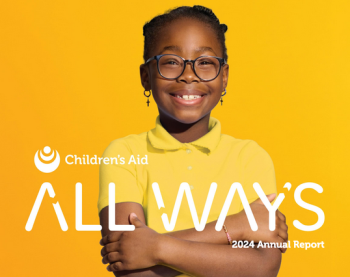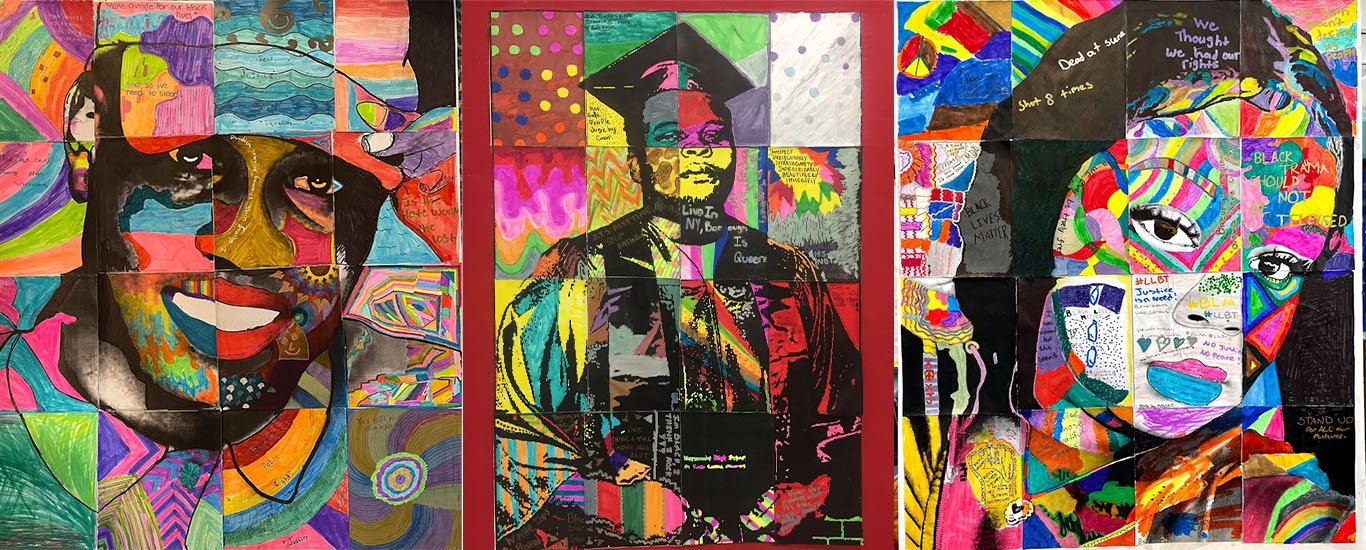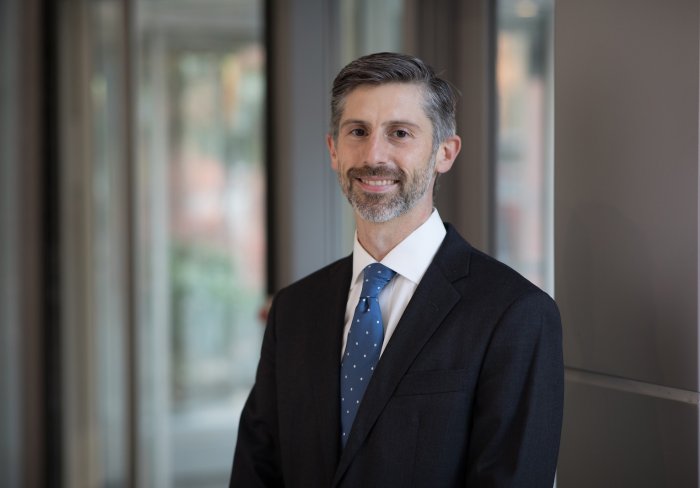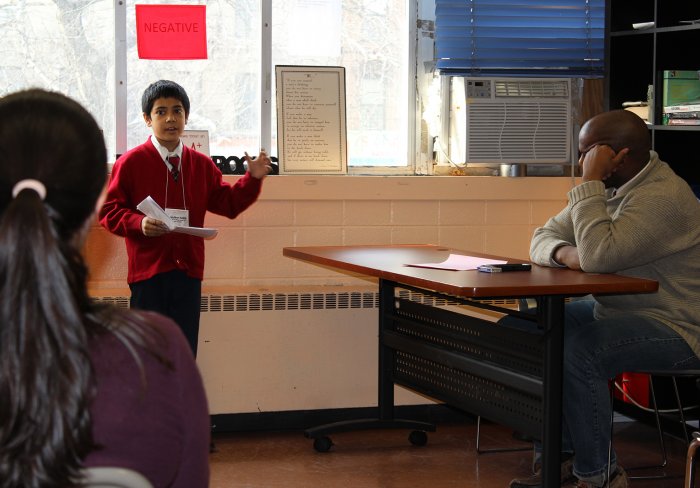Midge Caparosa understands the impact that art can have on young people.
As the program director of arts initiatives at Children’s Aid, she uses art as a way to have meaningful conversations with students about activism and social injustice.
In the summer of 2021, middle school students enrolled in Children’s Aid programming at P.S. 72 and Hope Leadership Academy in Harlem worked together to make tribute portraits of people who were victims of racially motivated murders. The portraits of George Floyd, Breonna Taylor, Ahmaud Arbery, Tamir Rice, and more were created using 16 squares.
Each student decorated a square using markers and colored pencils, and they were also encouraged to include a six-word poem to articulate their thoughts and feelings on racism, social injustice, and/or police brutality. The individual squares were then put together to create a collaborative piece of art.
“It’s not just about the portraits,” Midge said. “We talk about each situation, its connection to history, how these things are still happening. I try to create a safe space for them to have honest conversations about racism and what they feel are some of the root causes of the racial unrest in society today."
Though the idea for this project began after the deaths of Trayvon Martin and Michael Brown – students at our East Harlem Community Center used the same methods to create portraits of the two teenagers – Midge decided to reintroduce it with a new component. In addition to the portraits, students met with the Civilian Complaint Review Board, an independent agency that investigates complaints against police misconduct in New York City.
Students are taught how to file a complaint, about the Right to Know Act, and best practices for de-escalation. More than 100 students have participated so far, and the project is ongoing with plans to expand to other Children’s Aid sites.
“It helped them to understand why using their voice and reporting acts of racism is important, how it would affect them if local politicians actually knew what was happening on the ground,” she said. “It’s empowering for them to see what an impact they can have.”
When Midge first brings up the art project, many students have reservations, particularly about their skills. But she reassures them that they don’t have to be the best artists to enjoy making art.
“Lot of kids don’t feel like artists,” she said. “When I come in with all these markers, I get a lot of moans. I really let them know it’s not about being a skilled artist or drawing a straight line. It’s just about getting their thoughts down, enjoying the time that they’re exploring shapes and colors. It’s more about creative expression than artistic ability.”
When students feel stuck, Midge employs several tactics to spark their creativity. She’ll point to students’ clothes and ask about the colors they’re wearing. She knows that older kids gravitate toward metallic markers so she stocks up. She’ll also bring in past portraits for inspiration, and share work of other art activists.
Midge and the youth are planning a culminating event to display the pieces at a gallery so that students can experience what it feels like to elevate their voices and share their artwork with the community.
“In the beginning, they moan and roll their eyes,” she said. “But when they see the final project come together, they do feel accomplished and empowered.”







